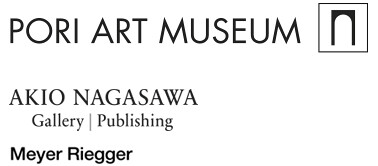January 21–May 29, 2022
Eteläranta
FI-28100 Pori
Finland
Hours: Tuesday–Sunday 11am–6pm,
Wednesday 11am–8pm
T +358 44 7011080
Mari Katayama
Curated by Luigi Fassi and Anni Venäläinen
The art and biography of Mari Katayama are directly intertwined. Suffering from congenital tibial hemimelia, Katayama had both legs amputated when she was nine. After entering the Tokyo University of Arts at the age of 23, Katayama developed a deep reflection on identity as a relationship between the body and the interiority of the person. In her numerous photographic self-portraits she has presented her own body as a living sculpture equipped with handmade objects and decorated prosthetic limbs.
Bringing to the fore her own body as a chiasma of different configurations, Katayama’s photographs constantly rearticulate the perception of the singular existence of the artist and of the human body. The self-portraits show the artist in a variety of domestic and private situations among intricately embroidered objects, and accompanied by prosthetic legs of various kinds. Some of the latter are functional, others are designed to refashion the artist’s body.
Katayama interrogates the viewers by confronting them with staged and mundane scenes, in the public space and in intimate scenarios, in which fixed social and cultural norms of able-bodiedness are exposed to be challenged and redefined. Expanding the freedom of choice for the disabled, Katayama’s “High heel project” provides amputees with customized prosthetic high-heel shoes to be used on stage while performing as a singer, model or keynote speaker. Using her body as the site where representations of diversity and identity are inscribed, Katayama explores the tensions between her lived bodily experiences and normative expectations of a functional human body.
The exhibition at the Pori Art Museum is Katayama’s first solo show in Finland, and an intense and concentrated introduction to her photographic oeuvre.
Eva Koťátková
Curated by Luigi Fassi and Anni Venäläinen
The territory between freedom and coercion, autonomous expression and its restriction, has always been at the heart of Eva Koťátková’s work. In her practice she constructs performative models of social analysis in order to investigate the forms of common sense and show the ideological construction of collective and individual behavior.
One of the favorite territories of Koťátková’s practice is childhood and its educational space, the school, with its paradigms of integration and social control, against which the artist conducts her research on the institution’s sedimented rituals and behavioral models.
The exhibition centers around Room for Restoring Empathy, an installation formed through numerous meetings and workshops with children, who became temporary collaborators of Koťátková. They were asked to bring their jumpers, jackets and other pieces of personal clothing, which were then transformed into the children’s second skin to articulate their opinions, dreams and desires. The jackets acquired mouths able to speak or shout, and eyes capable of seeing through walls or behind corners. During the workshops stories were shared and collected: stories of stigmatization and oppression, as well as stories about empathy and solidarity. When presented to the viewers, the elements of Room for Restoring Empathy act as a group of bodies that have convened to discuss, share or dream together, thus creating a social space respectful of all the participants’ individualities.
The exhibition at the Pori Art Museum is Koťátková’s first solo show in Finland.

